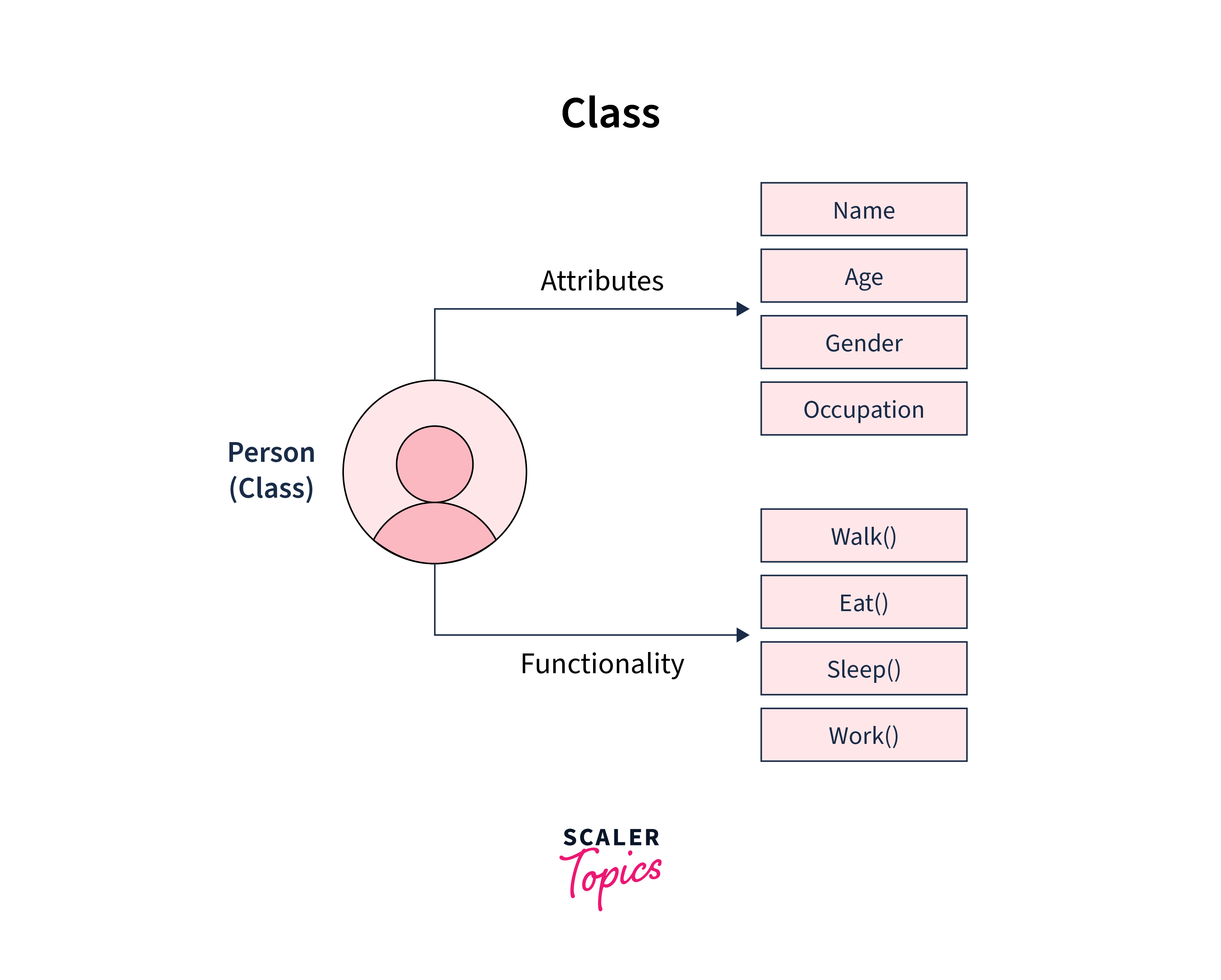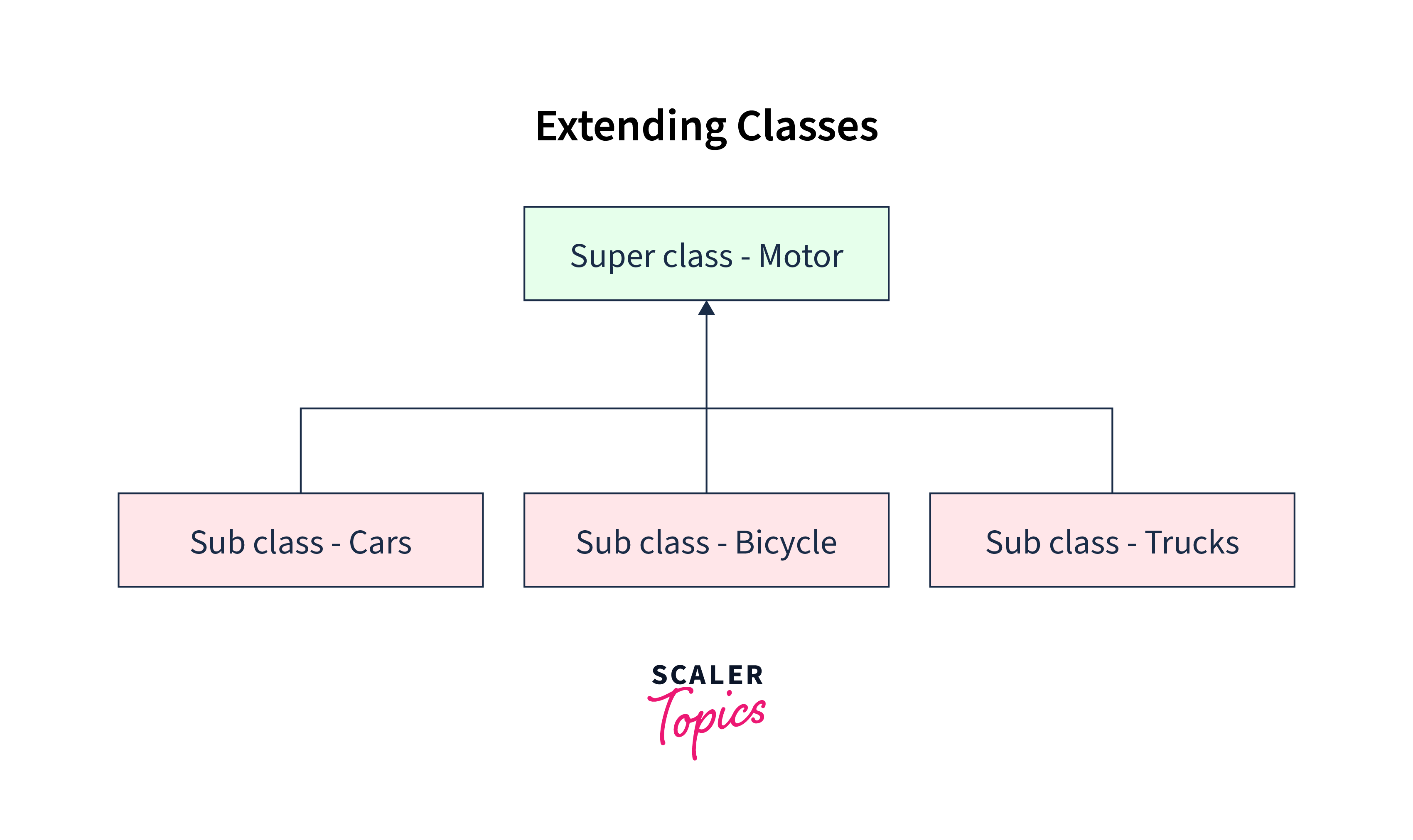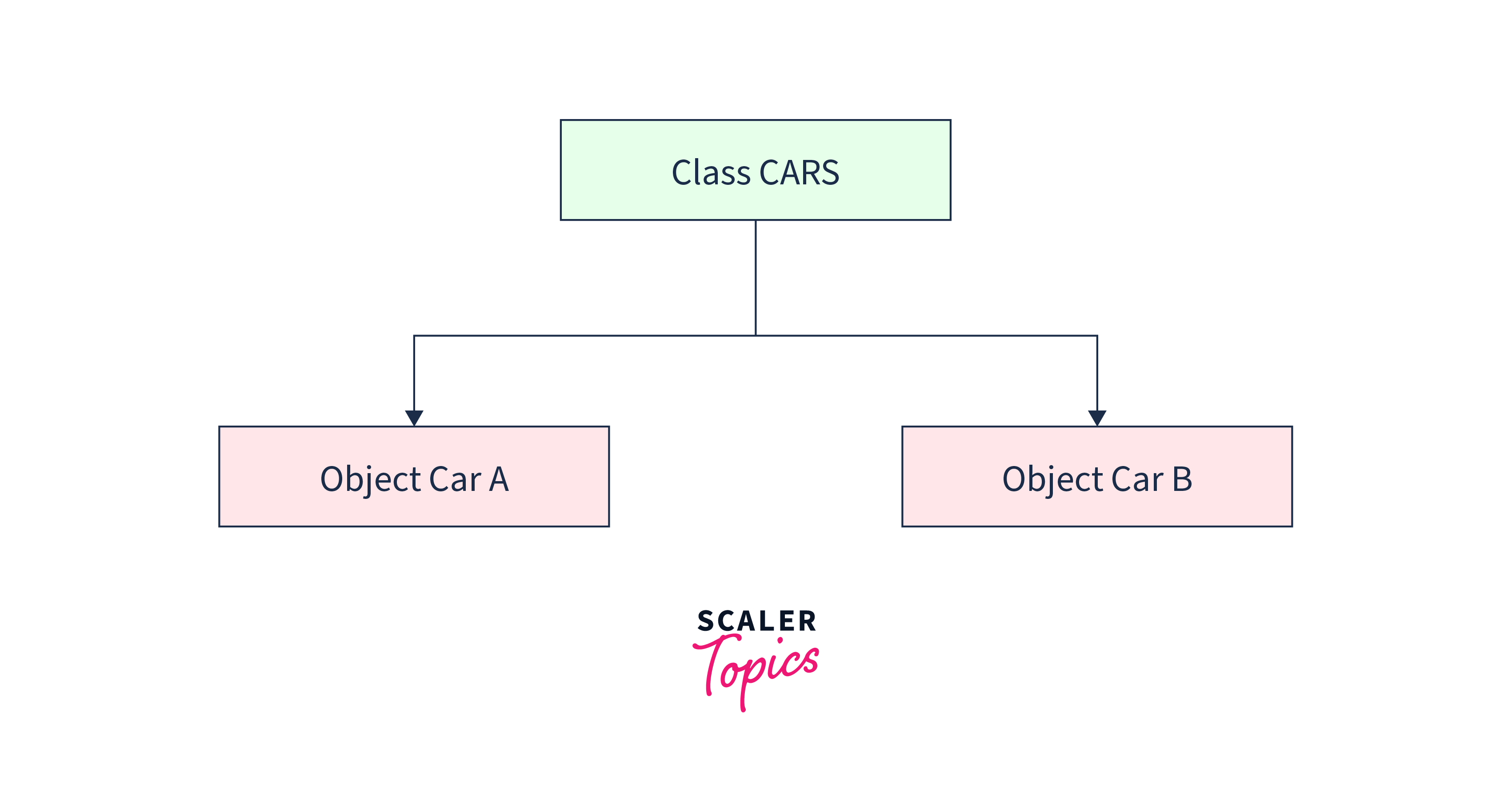Scala Classes and Objects
Overview
Scala classes and objects are fundamental constructs in the Scala programming language, serving as the building blocks of object-oriented design. Classes define the structure and behavior of objects, offering a blueprint for creating instances with their own properties and methods. Objects, on the other hand, are unique singletons or instances that encapsulate behavior or store shared data.
What are classes in Scala?
In Scala, classes are fundamental constructs used for defining and creating objects. They serve as blueprints for object creation, encapsulating both data (in the form of fields or properties) and behavior (in the form of methods).
Declaration of Classes
In Scala, we declare classes using the class keyword, followed by the class name. Here's the basic syntax for declaring a class:
Example
In this example, we define a Scala class called "Person" with two fields: "name" (mutable, declared using "var") and "age" (immutable, declared with "val"). The class incorporates a "greet" method that generates a personalized greeting message using the "name" and "age" fields.

What is a constructor?
A constructor is a special method in a class that is responsible for initializing the object of that class. It is used to set up the initial state of the object by assigning values to its fields or performing any necessary setup tasks.
- Constructors can take parameters, allowing objects to be initialized with values provided during object creation.
- Constructors can have access modifiers (public, private, protected) to control their visibility and accessibility.
Types of constructor
In Scala, constructors are essential for initializing objects. There are two main types of constructors: primary constructors, defined in the class header and automatically called when an object is created, and auxiliary constructors, additional constructors defined within the class using the def this(...) syntax. Primary constructors are the primary means of object initialization, while auxiliary constructors provide flexibility by allowing multiple ways to initialize objects, but they must ultimately call the primary constructor to ensure proper object setup.
Primary Constructor
- The primary constructor is defined in the class header, and it is automatically called when an object of the class is created.
- The primary constructor's parameters can have different access modifiers (var, val, or no modifier), affecting the mutability and visibility of the corresponding fields.
Example:
In this example, name is a mutable field (declared with var), and age is an immutable field (declared with val). The primary constructor takes two parameters, name and age, which are used to initialize the object's fields.
Auxiliary Constructor
- Auxiliary constructors are defined using the def this(...) syntax within the class. They must call either the primary constructor or another auxiliary constructor using this(...).
Example:
In this example, we have defined two auxiliary constructors. The first auxiliary constructor takes only the name parameter and sets the age to a default value of 0 before calling the primary constructor. The second auxiliary constructor accepts name, age, and isStudent parameters and calls the primary constructor first, then adds additional initialization logic for students.
Class Instance
A class instance, also called an object, is a specific occurrence or realization of a class in object-oriented programming (OOP), embodying a unique entity defined by the class blueprint. Instances have their individual properties (attributes) and behaviors (methods), resembling distinct copies of the class.
Creating a Class Instance:
- In Scala, we create an instance of a class using the new keyword followed by the class name and any required constructor arguments. For example, if we have a Person class:
- Here, person1 and person2 are two distinct instances of the Person class. They have their own name and age properties.
Extending a Class
Extending a class, a core concept in object-oriented programming (OOP), enables the creation of new classes (subclasses or derived) by building upon an existing class (superclass or base). Inheritance facilitates the reuse and expansion of base class functionality, permitting customization in derived classes.

In Scala, we can extend a class by creating a new class that inherits from an existing class. Here's how we extend a class in Scala:
- Superclass: The Superclass is the existing class that we want to extend. It serves as the base or parent class.
- Subclass: The Subclass is the new class we are creating, which inherits from the Superclass. It's also referred to as the derived or child class.
- Inheritance: Extending with extends allows the Subclass to inherit and access Superclass members as its own.
- Adding or Modifying Members: In the Subclass, you can add, override, or modify members to tailor and extend Superclass functionality for specific Subclass needs.
Implicit Classes
In Scala, implicit classes are a powerful feature that allow us to add new methods to existing classes without modifying their source code. Implicit classes are especially useful when we want to enrich or extend the functionality of classes from external libraries or classes that we cannot modify directly. Implicit classes are defined using the implicit class keyword combination.
Here's how we define and use implicit classes in Scala:
Defining an Implicit Class:
- To create an implicit class, use the implicit class syntax, specifying the constructor parameters that represent the type to extend, and include methods added to instances of the target type.
- In this example, we define an implicit class RichString that extends the String class by adding a customUpperCase method that converts the string to uppercase and appends "(Custom)" to it.
Using an Implicit Class:
- To utilize an implicit class, import it into the desired scope, granting access to the added methods as if they were native to the original class.
Inner Classes
In Scala, inner classes, also called nested classes, are classes defined within another class or object. They possess access to their outer class's members and serve purposes like encapsulation, code organization, and abstraction. Scala supports three inner class types: member inner classes, local inner classes, and anonymous inner classes.
- Member Inner Classes: Member inner classes in Scala are classes defined within another class, tied to an instance of the outer class, and capable of accessing its members, including private ones, while having their fields and methods.
- Local Inner Classes: Local inner classes in Scala are confined to method or block scopes, accessing outer class or method members if within scope.
- Anonymous Inner Classes: Anonymous inner classes in Scala allow on-the-fly creation of subclasses without naming, often used for concise implementations of abstract or trait methods.
What are objects in Scala?
Objects in Scala are unique singleton instances of anonymous classes.
- They are automatically created and initialized the first time they are accessed.
- Objects are often used to encapsulate behavior, store utility methods, and provide static members (fields and methods).
- They serve as a central part of Scala's approach to singleton design patterns.

Declaration of object in Scala
In Scala, we declare an object using the object keyword followed by the object's name. Here's the basic syntax for declaring an object:
Example
Output:
In this example, we introduce two Scala objects: "MySingleton" and "Main." The "MySingleton" object encapsulates a "greet" method, responsible for displaying a greeting message on the console, and a "magicNumber" field, which retains a constant value. On the other hand, the "Main" object serves as the application's entry point, housing the "main" method, which is automatically executed when the program is launched.
Singleton Objects
In Scala, a singleton object is an instance of an anonymous class that is automatically created and initialized when it is first accessed. Singleton objects serve as a way to create single instances (singletons) of their own class, and they are commonly used for encapsulating behavior, storing utility methods, and providing a single point of access to shared functionality. Here are the key characteristics and use cases for singleton objects:
Characteristics of Singleton Objects:
- Singleton Instance: Each singleton object is a unique instance of its own anonymous class. It is created only once and is shared throughout the program.
- Automatic Initialization: Singleton objects are automatically created and initialized the first time they are accessed or referenced in the program.
- No Constructor: Unlike regular classes, singleton objects do not have constructors and cannot be instantiated using the new keyword. They are accessed directly as if they were instances of a class.
- Shared State: Singleton objects can encapsulate shared state and behavior that should be accessible globally within an application.
Anonymous object
In Scala, an anonymous object is an instance created and employed without naming or variable assignment, typically for one-time operations, avoiding explicit class or object declaration, and primarily used for invoking methods or ad-hoc actions.
Characteristics:
- No Explicit Naming: Anonymous objects are created without assigning them to a variable or giving them a name. They are used directly at the point of creation.
- Short-Lived: They are typically short-lived and used for immediate, one-time tasks.
- Conciseness: Anonymous objects can make our code more concise and avoid the need for creating named instances when they are not needed.
- Method Invocation: They are often used to invoke methods or perform actions defined in a class or object.
- Limited Reusability: Since they are not assigned to a variable, we cannot reuse the same anonymous object for multiple operations.
Here's how we create and use an anonymous object in Scala:
In this example, we have a class named MyClass that includes a greet method. Within the Main object's main method, two anonymous objects of the MyClass class are created using the new keyword. These anonymous objects are used immediately to invoke the greet method, with distinct names provided as arguments.
Companion Objects
In Scala, a companion object is an object that is defined in the same source file and bears the same name as a class. Companion objects are closely associated with their corresponding classes and serve several important purposes in the language.
Characteristics of Companion Objects:
- Same Name, Same File: A companion object has the same name as its associated class and must be defined in the same source file as the class. The class and its companion object share the same name and source file.
- Static Members: Companion objects can contain static members, including fields and methods. These members are associated with the class and are shared across instances of the class.
- Access to Private Members: Companion objects have access to the private members (fields and methods) of their associated class and vice versa. This allows for private members to be accessed by both the class and the companion object.
- Factory Methods: Companion objects are often used to define factory methods for creating instances of the associated class. These factory methods can provide alternative ways to construct objects, including named constructors.
- Singletons: Companion objects can serve as singletons in Scala. Since they are only created once and automatically initialized when the class is first accessed, they can encapsulate shared behavior and state.
Conclusion
- Classes are used to model real-world entities, while objects serve as single instances or utility constructs. It is a blueprint for creating objects with defined properties and behaviors.
- Constructors, including primary and auxiliary constructors, are essential for initializing objects. They allow us to set up the initial state of objects and ensure they adhere to class invariants.
- Extending classes through inheritance allows us to create new classes based on existing ones, promoting code reuse and modularity.
- An implicit class in Scala is a class declared with the implicit keyword that adds new methods to an existing type, enhancing its functionality.
- In Scala, an object is a singleton instance of an anonymous class that encapsulates behavior, provides static members, and serves as an entry point for applications.
- An anonymous object in Scala is a short-lived, unnamed instance created on-the-fly for ad-hoc operations without assigning it to a variable or class.
- Companion objects are closely associated with their corresponding classes and are used for defining static members, factory methods, and shared behavior.
